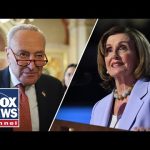Former President Donald Trump is once again championing his “America First” economic agenda, with a renewed focus on revitalizing U.S. manufacturing and curbing the influence of what his administration views as bloated government bureaucracy. Stephen Miller, a key advisor, recently outlined the administration’s ambitious plans to lower corporate taxes, impose sweeping tariffs on imports, and incentivize domestic production. The goal is clear: to restore America’s industrial base and secure economic independence, a vision that resonates strongly with many working- and middle-class Americans.
Central to Trump’s strategy is the implementation of aggressive tariffs on imports, including a 10% baseline tax on all foreign goods and significantly higher rates for nations like China. These measures aim to encourage companies to relocate their operations to the United States, reversing decades of outsourcing that have hollowed out American manufacturing. While critics argue that such policies could lead to higher consumer prices and strained international relations, supporters contend that they are essential for ending America’s reliance on foreign supply chains—particularly in critical sectors like semiconductors and pharmaceuticals.
Miller also highlighted the administration’s success in reducing illegal immigration and securing the southern border as part of its broader economic strategy. By prioritizing jobs for American workers and cutting back on federal spending tied to social services for undocumented immigrants, Trump’s policies aim to alleviate pressure on local economies and create more opportunities for U.S. citizens. The administration has also signaled its intent to streamline government agencies, reducing what it describes as regulatory overreach that stifles innovation and burdens small businesses.
While some economists express skepticism about the feasibility of a full-scale manufacturing renaissance, Trump’s base remains energized by his bold promises. The administration is doubling down on its commitment to slash corporate taxes further—potentially reducing the rate from 21% to 18%—and expand incentives for industries deemed vital to national security. These policies are designed not only to attract investment but also to create a ripple effect of job growth across related sectors such as construction and logistics.
Ultimately, Trump’s economic vision represents a stark departure from decades of globalist trade policies that prioritized free markets over domestic production. By focusing on reshoring jobs, reducing government waste, and protecting American industries from foreign competition, his administration aims to rebuild a strong middle class while safeguarding national security. Whether this approach will deliver the promised “golden age” of American manufacturing remains to be seen, but it undeniably reflects a bold attempt to shift economic power back into the hands of everyday Americans.




